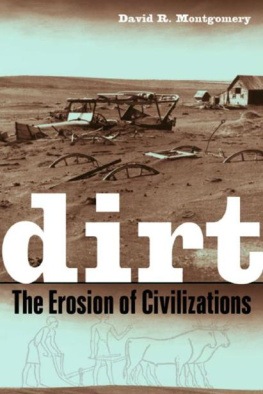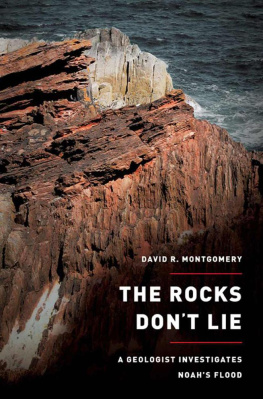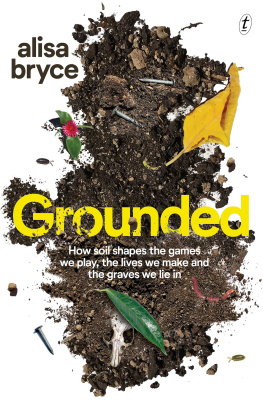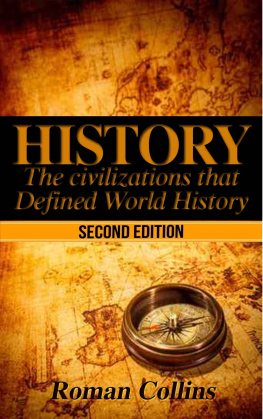

The publisher gratefully acknowledges the generous contribution to this book provided by the General Endowment Fund of the University of California Press Foundation.



David R. Montgomery








For Xena T. Dog, enthusiasticfield assistant, dedicated receptionist, and very best friend walk with me forever, sweet girl

Ix
i

This book could never have been written without the support of Anne Bikle who, once again, put up with a dining room table covered with endless revisions. Susan Rasmussen chased down obscure historical sources and proved an incredible library sleuth. Polly Freeman, Blake Edgar, and Edith Gladstone provided exceptional editorial input and guidance, and Sam Fleishman was a tremendous help in finding the manuscript a good home. Charles Kiblinger and Harvey Greenberg helped prepare the illustrations. I am also grateful to the Whiteley Center at the University of Washington's Friday Harbor Laboratory for providing the perfect environment to finish the manuscript. I am deeply indebted to the researchers whose work I have relied on in this synthesis and compiled at the end of the book for readers interested in finding the original sources. Naturally, I alone remain responsible for any inadvertent errors and oversights. Finally, in the interest of brevity and narrative I have chosen not to focus on the history and details of the work of the Natural Resources Conservation Service (formerly the Soil Conservation Service), even though its important work remains among the most underappreciated on the planet-and essential to our future.



What we do to the land, we do to ourselves.
WENDELL BERRY

ON A SUNNY AUGUST DAY IN THE LATE 1990S, I led an expedition up the flank of Mount Pinatubo in the Philippines to survey a river still filled with steaming sand from the massive 1991 eruption. The riverbed jiggled coyly as we trudged upriver under the blazing tropical sun. Suddenly I sank in to my ankles, then my knees, before settling waist deep in hot sand. While my waders began steaming, my graduate students went for their cameras. After properly documenting my predicament, and then negotiating a bit, they pulled me from the mire.
Few things can make you feel as helpless as when the earth gives way beneath your feet. The more you struggle, the deeper you sink. You're going down and there's nothing you can do about it. Even the loose riverbed felt rock solid after that quick dip in boiling quicksand.
Normally we don't think too much about the ground that supports our feet, houses, cities, and farms. Yet even if we usually take it for granted, we know that good soil is not just dirt. When you dig into rich, fresh earth, you can feel the life in it. Fertile soil crumbles and slides right off a shovel. Look closely and you find a whole world of life eating life, a biological orgy recycling the dead back into new life. Healthy soil has an enticing and wholesome aroma-the smell of life itself.
Yet what is dirt? We try to keep it out of sight, out of mind, and outside. We spit on it, denigrate it, and kick it off of our shoes. But in the end, what's more important? Everything comes from it, and everything returns to it. If that doesn't earn dirt a little respect, consider how profoundly soil fertility and soil erosion shaped the course of history.
At the dawn of agricultural civilizations, the 98 percent of people who worked the land supported a small ruling class that oversaw the distribution of food and resources. Today, the less than i percent of the U.S. population still working the land feeds the rest of us. Although most people realize how dependent we are on this small cadre of modern farmers, few recognize the fundamental importance of how we treat our dirt for securing the future of our civilization.
Many ancient civilizations indirectly mined soil to fuel their growth as agricultural practices accelerated soil erosion well beyond the pace of soil production. Some figured out how to reinvest in their land and maintain their soil. All depended on an adequate supply of fertile dirt. Despite recognition of the importance of enhancing soil fertility, soil loss contributed to the demise of societies from the first agricultural civilizations to the ancient Greeks and Romans, and later helped spur the rise of European colonialism and the American push westward across North America.
Such problems are not just ancient history. That soil abuse remains a threat to modern society is clear from the plight of environmental refugees driven from the southern plains' Dust Bowl in the 1930s, the African Sahel in the 1970s, and across the Amazon basin today. While the world's population keeps growing, the amount of productive farmland began declining in the 197os and the supply of cheap fossil fuels used to make synthetic fertilizers will run out later this century. Unless more immediate disasters do us in, how we address the twin problems of soil degradation and accelerated erosion will eventually determine the fate of modern civilization.
In exploring the fundamental role of soil in human history, the key lesson is as simple as it is clear: modern society risks repeating mistakes that hastened the demise of past civilizations. Mortgaging our grandchildren's future by consuming soil faster than it forms, we face the dilemma that sometimes the slowest changes prove most difficult to stop.
Next page































